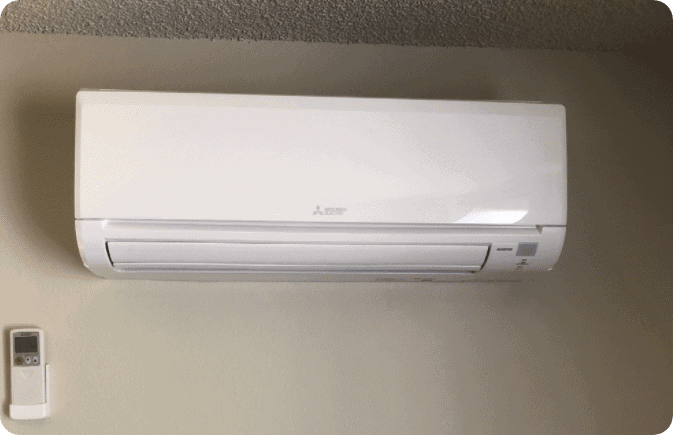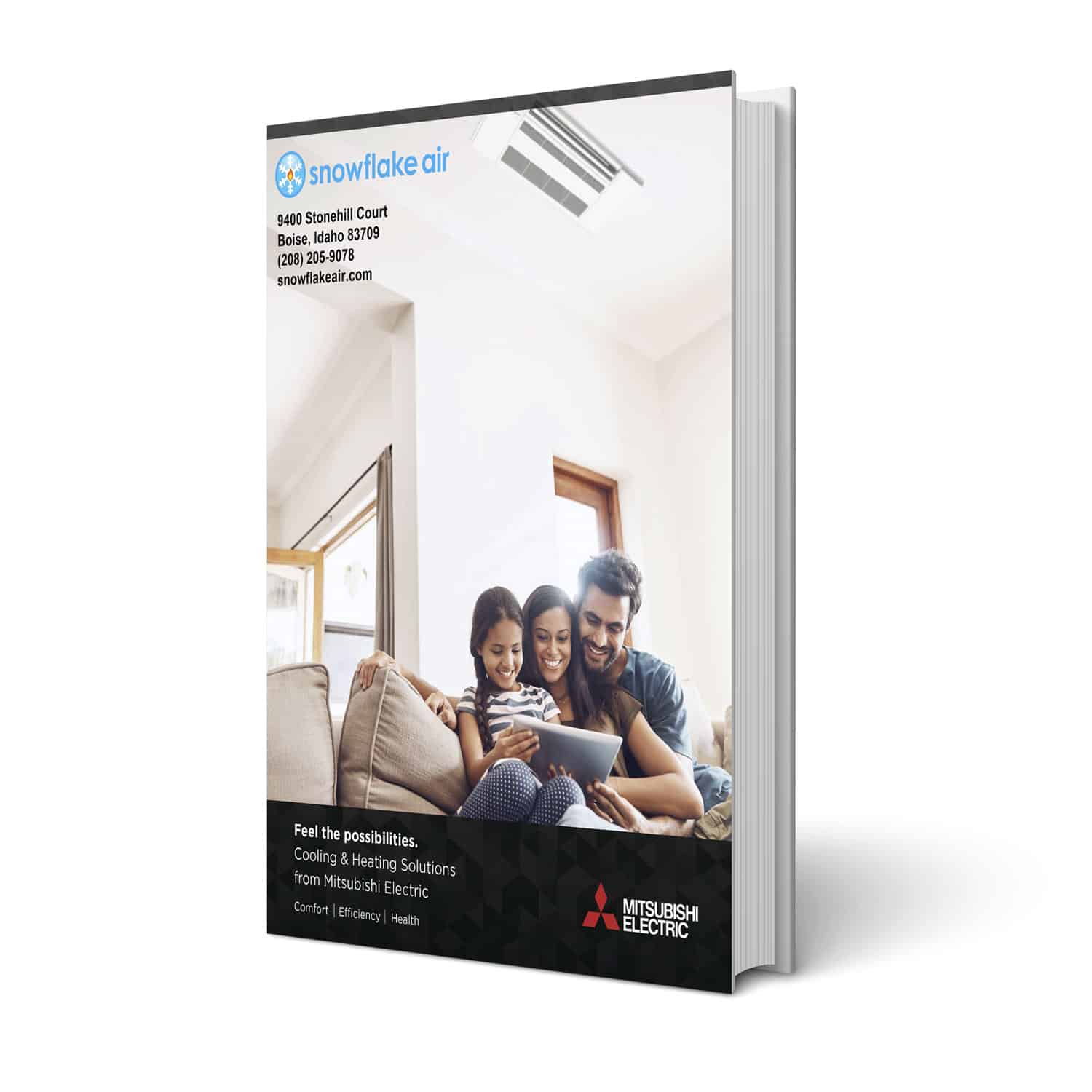 Do you need extra blankets in the winter? Are your feet cold when you go to sleep? Is it tough to get out of bed in the morning because you dread that freezing feeling once you kick off the blankets? If so, you’re not alone.
Do you need extra blankets in the winter? Are your feet cold when you go to sleep? Is it tough to get out of bed in the morning because you dread that freezing feeling once you kick off the blankets? If so, you’re not alone.
Countless homes, especially single homes in the suburbs, have a problem with their upstairs or top floor always colder than the downstairs in the wintertime.
The bad news is that it’s been like this for decades. The good news is that now there are better ways to solve the problem.
In this article, we’ll cover why this happens and how to fix a bedroom that’s always too cold in the winter.
We’ll outline a few options, but one of them, in our opinion, stands head-and-shoulders above the others.
And, if you’re looking for the best way to finally get those upstairs rooms as warm and comfortable as your first floor, call or email us here at Snowflake Heating and Air.
Starting with a free consultation, we’ll help you find the best solution for your home in Boise, Caldwell, Kuna, or anywhere in the Treasure Valley.
Four Reasons The Upstairs Is Colder Than Downstairs In The Winter
Your upstairs rooms are colder than downstairs due to physics, plus the design of your home and HVAC system. The four main reasons are:
- Heat Rises (And Keeps On Going)
- The Master Bedroom Has High Ceilings
- You Only Have One Thermostat
- Your Ductwork Is Too Long
Heat Rises (And Keeps On Going)
We all know heat rises. So shouldn’t that make the upstairs warmer in the winter? The problem is another phenomenon: heat, or thermal energy, is also attracted to cold. So, any heat you have will gravitate toward the coldest spot it can find.
And, there’s plenty of cold air outside, just on the other side of your windows or roof.
Heat rises to your top floor. Then, it finds any way out that it can: through holes, leaks, or any tiny opening. If you don’t have good attic insulation, more heat will escape.
You Only Have One Thermostat
Next, your thermostat is on the first floor. But, that part of the house doesn’t have the problem we just outlined. It’s always warmer because the heat collects down there. This creates uneven heating.
Since there’s heat at least close to the floor on the second story, the thermal energy on the first floor won’t escape as quickly. The thermostat sees the temperature in the room is where you want it, so it shuts off the furnace.
It never keeps running long enough to give the second floor the treatment it needs.
The other option is to turn up the thermostat. But then, you make the downstairs too hot trying to heat the second floor. In some cases, even the basement gets too hot when you’re trying to heat the upstairs.
The Master Bedroom Has High Ceilings
If your bedroom has a high or vaulted ceiling, the heat won’t collect near the floor where you’re sleeping. Instead, it keeps rising well over your head and collects near the ceiling.
Your Ductwork Is Too Long
Sometimes, ductwork causes a problem. When a room is too far from the heating system, you lose too much pressure from the air traveling through the house and escaping through other vents. By the time it reaches that top floor room, the air flow is weak and won’t warm the room as well.
This is a typical heating or cooling problem because ductwork is usually an afterthought for your home’s design and layout. An HVAC contract has to work around existing joists, walls, and other structures. That means longer runs and more turns, which reduce air pressure.
 Four Ways To Fix Rooms That Are Too Cold In The Winter (Pros & Cons)
Four Ways To Fix Rooms That Are Too Cold In The Winter (Pros & Cons)
Here are four ways you can fix rooms that are too cold in the winter. While we highly recommend the last one, we’ll walk through the pros and cons for each:
- Space Heaters
- Better Insulation
- Second Furnace
- Ductless Heating And Cooling
Space Heaters
Space heaters are, at best, a temporary solution. Sure, they’re very inexpensive. And, all you have to do is plug them in. But, they use a lot of electricity. They don’t heat that large of an area.
And, you can’t leave them unattended when they’re on or while you sleep. It’s too much of a fire hazard.
Better Insulation
Adding better insulation to your walls, attic, or crawlspace can keep warm air from escaping in the winter. You’ll also block out heat from the sun in the summer, making your air conditioning more effective.
However, you can’t add insulation to your walls or a small space between the ceiling and roof of your house without tearing out the walls or ceiling and building them back. That can get messy and expensive.
Second Furnace
For larger homes, a second furnace is a common solution. Now you have two thermostats and two HVAC systems. This way, the top floor gets the individual treatment it needs.
But, it’s also expensive — the price of another heater and AC — and you’ll lose a closet or other space to house it. You may also need to replace your downstairs heater too. Many setups require two of the same make and model for them to work together.
Ductless Heating And Cooling
Ductless heating and cooling is becoming more popular here in Idaho — especially since we rely on electric heat for the most part anyway. These systems are customizable and flexible: You can treat the entire house or just that one problem room.
They work just as well — usually better! — than conventional ducted HVAC. And it uses a fraction of the energy a ducted system requires. So, you save money each month. And, they’re very easy to install. There’s no major work required.
Read More: How Do Mini Splits Work?
The one drawback is the cost to install a mini split in Boise Metro or Valley County. But for now, we’d like to go further into how ductless works and why it’s often the best option.
Read More: Rebates and Financing Options For Treasure Valley Heat Pump and Mini Split Installations
Ductless Heating And Cooling For Boise, ID Homes
Why is ductless heating and cooling, or mini split systems, worth the investment? Here are three of the biggest reasons:
- Better Comfort
- Lower Bills
- Easy Installation
Better Comfort
The big one, of course, is comfort. We put an air handler with a built-in thermostat in each room you want to treat. That means every room, or zone, gets customized treatment. It doesn’t matter if the living room feels great. The air handler down there can power down while the one in the master bedroom keeps providing heat until the upstairs is just as comfortable.
Lower Bills
Mini split uses a heat transfer process instead of generating heat by using fossil fuels. But, the short of it is that a heat transfer requires a fraction of the energy needed for conventional AC.
The heat pumps also have variable-speed motors. So, instead of stopping and starting a few times every hour, the system spends most of the time in low-power, low-speed mode. It maintains the temperature within a degree of your settings (no getting colder before the furnace kicks back on) instead of clicking on to course-correct when it gets chilly.
Easy Installation
Finally, installing these systems is super easy. And, they make almost no impact on the look and feel of your home. As the name “ductless” implies, we don’t need to add ducts and vents to your home or even tap into the system you have.
Instead, all we do is mount the heat pump outside, put the air handlers in each room, and connect them with line sets that usually run through the walls.
Read Real Case Studies Of Mini Split Installations In Boise Metro and Valley County
Mini Split Installations In Cascade, ID
Snowflake Air is a certified Mitsubishi Diamond Dealer with an outstanding reputation installing mini splits in Cascade, ID homes and across Treasure Valley.. If you’d like to learn more about how ductless heating and cooling can make your home more comfortable and energy-efficient — or if you have any other HVAC concerns — call or email us for a free consultation.




Trackbacks/Pingbacks